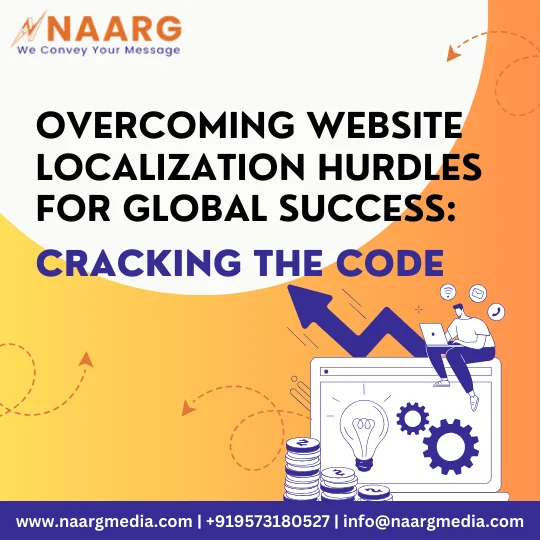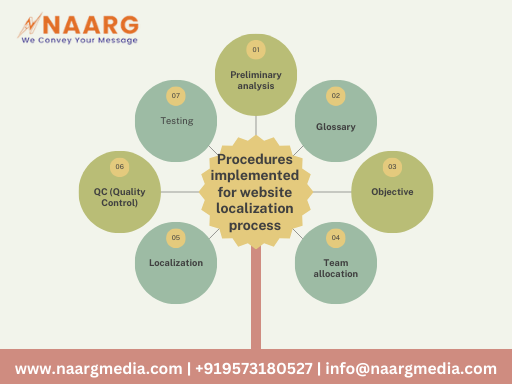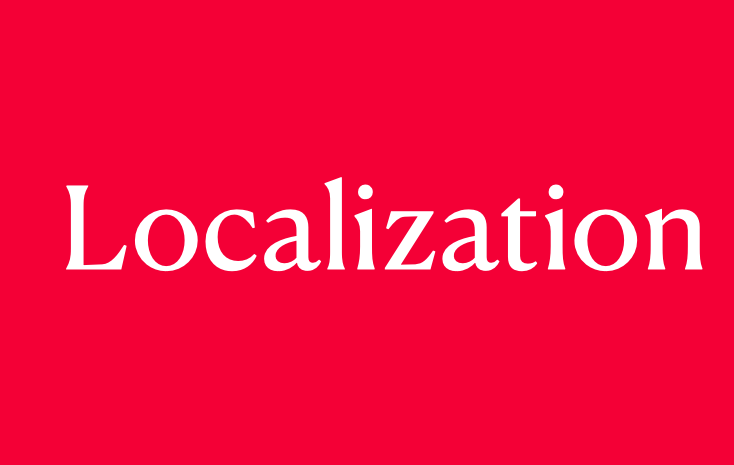We recently reached out to industry leaders to gain a deeper understanding of the hurdles and challenges they encounter while localizing a website.
In this article, we have compiled their valuable insights, shedding light on the challenges they faced during website localization, the implications of not addressing them, and practical solutions to enhance the website localization journey.
Let’s delve into the issues raised about the challenges faced in localizing a website and explore the roadmap for effective website localization.

Major Hurdles in Brand Website Localization
After engaging with numerous industry leaders regarding the challenges they encounter in website localization, we observed a common pain point among them: the struggle to effectively localize their websites.
Here’s what they said about the challenges they encountered:
Website localisation is a lot more than just translating content. It’s about creating a connection with your audience, culturally and linguistically.
One major challenge?
Navigating the nuances of local culture. What works in one region a lot of the time, won’t work in another. You’ve got to get the cultural context spot on to avoid hurting your marketing efforts.
Then there’s the technical side:
Optimising SEO for different languages can be tricky. You’re juggling keywords, search trends, and local search engine preferences. Plus, ensuring your website layout adapts to different languages is crucial. Some languages take up more space or read right-to-left, and your design’s got to handle that seamlessly.
Another thing is keeping your brand’s voice consistent across all languages. This can be incredibly tough. Lastly, ongoing updates can be a huge pain. Localising a website isn’t a one-time deal; it needs regular updates, and each version has to be in sync.
Adam Stewart- Founder
Cultural Sensitivity and Relevance: The paramount challenge is understanding and integrating the cultural nuances of the target market. For instance, in the tourism sector, it’s crucial to adapt content to reflect local customs, values, and sensitivities to resonate with the audience authentically.
Language and Translation Accuracy: Ensuring accurate and contextually appropriate translation is critical, especially in technical fields like software. It’s not just about linguistic translation but also about conveying the right technical terms and industry jargon in a way that’s understandable and relevant to the local audience.
Local Regulations and Compliance: Different regions have unique legal requirements regarding digital content. For global hotel chains, adapting their websites to comply with local laws regarding online bookings, consumer rights, and data privacy is a complex yet essential task. Neglecting this aspect can lead to legal complications and damage to the brand’s reputation.
Search Engine Optimization (SEO) for Different Regions: Localizing a website also means optimizing it for local search engines. This involves understanding and implementing local SEO practices, which can vary significantly from one region to another. In competitive sectors like tourism, mastering local SEO is crucial for ensuring visibility and attracting the target audience.
These challenges require a strategic and well-informed approach to ensure successful website localization. It’s not just about translating content; it’s about creating a culturally relevant, legally compliant, and easily discoverable online presence in each target market.
Deepak Shukla-Founder
Maintaining cultural authenticity is a significant hurdle in translating content. It is essential to capture the subtleties of local language and customs to connect with diverse audiences effectively. Achieving a balance between global appeal and local relevance is crucial to creating an authentic, inclusive, and welcoming website for visitors from different cultures. This, in turn, enhances user engagement and experience.
Maarten Cox-Director
One significant hurdle is the diversity of languages and cultural nuances, making it crucial to choose a reliable localization strategy. Coordinating the translation of content, maintaining consistency across multiple languages, and ensuring a seamless user experience pose technical challenges. Additionally, companies must adapt their software architecture to support different languages without compromising performance. Another key concern is the ongoing maintenance of localized content, which requires a robust system for updates and changes. Balancing these technical aspects with cultural sensitivity is essential to successfully navigate the complexities of website localization for global audiences.
Rongzhong Li- CEO/Founder
The Agony of Brand Website Localization Challenges
When you opt for website localization, it poses a significant challenge, often resulting in a complex and intimidating experience. From linguistic nuances and cultural differences to technical intricacies, brands have to navigate a multitude of hurdles to effectively adapt their brands’ websites for diverse markets.
Technical challenges are yet another aspect where adapting design elements and ensuring seamless functionality across different platforms adds another layer of complexity.
Moreover, coordinating the efforts of multiple teams and dealing with potential inconsistencies can exacerbate the agony of website localization. Despite the undeniable benefits of reaching a global audience, the pain a brand endures during website localization underscores the need for meticulous planning and a robust strategy to ensure a successful presence in international markets.
The Business Impact of Neglecting Effective Website Localization
When you neglect effective website localization, it can have severe repercussions on a business’s bottom line. When a company fails to adapt its online presence to the linguistic, cultural, and technical nuances of diverse markets, it risks alienating potential customers and diminishing its brand credibility.
Overlooking the importance of seamless localization functionality across various regions can hinder the user experience, leading to frustrated visitors and a tarnished brand image.
So, investing in a robust website localization strategy is not merely a choice but a crucial necessity for your business aiming to thrive in the global marketplace.
Common Problems in Implementing Website Localization
While implementing website localization, you will come across challenges that you must navigate through to achieve global success. One prevalent issue is linguistic accuracy. Because direct translations may not capture the cultural nuances and idiomatic expressions of your target audience. Potentially leading to misinterpretations or, at worst, cultural insensitivity.
Then comes technical hurdles, as adapting website design, layout, and functionality for different languages requires meticulous attention to detail. Additionally, managing the time and cost associated with localization efforts can be daunting. Your business must strike a balance between quality and efficiency.
Effective Strategies to Solve Website Localization Woes
To address the challenges of website localization, implementing effective strategies is paramount. First and foremost, your business needs to prioritize thorough cultural research to ensure content adaptation aligns with local customs. Technical issues should be addressed through a comprehensive localization plan that includes adapting design elements and ensuring compatibility across platforms.
Partnering with Naarg can be invaluable in this endeavor. We bring a wealth of expertise in linguistic nuances, cultural adaptation, and technical proficiency. Our professional website localization services extend beyond mere translation, delving into the intricacies of a specific market’s contemporary language usage and cultural nuances.
The following procedure is implemented within Naarg for the website localization process:

1. Preliminary analysis
We initiate the website localization process with a comprehensive preliminary analysis. This in-depth assessment lays the foundation for a tailored localization strategy.
2. Glossary
To ensure linguistic consistency, we established a detailed glossary encompassing key terms and expressions. This fosters coherence across all localized content.
3. Objective
Our website localization initiatives are guided by precisely defined objectives. Whether you are aiming for user engagement or expanding market reach, each objective is articulated with overarching business goals.
4. Team allocation
We employ a strategic team allocation process where we assemble experts with linguistic proficiency and cultural awareness. This ensures a multidisciplinary approach for a well-rounded localization team.
5. Localization
From the transcreation of text to the customization of visuals, our localization process prioritizes cultural relevance and linguistic precision. Our website localization process involves the meticulous adaptation of content. Creating an immersive and resonant user experience.
6. QC (Quality Control)
We place a strong emphasis on quality control throughout the localization process. Rigorous checks are conducted to verify linguistic accuracy and cultural appropriateness, guaranteeing a seamless localization process.
7. Testing
Before the final rollout, we conduct thorough testing to validate the user experience and functionality of localized websites to ensure optimal performance.
These steps allow us to meticulously tailor product or service, ensuring they resonate authentically with the target audience in each unique market.
So, what are you waiting for? Let’s Craft a Seamless Global Presence Together—Start Your Journey Now!

